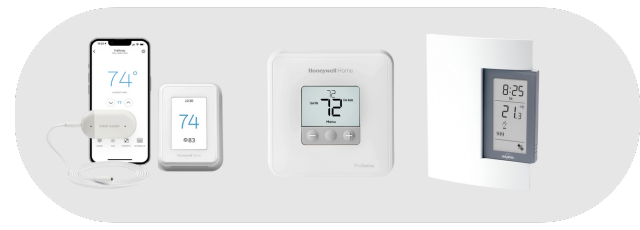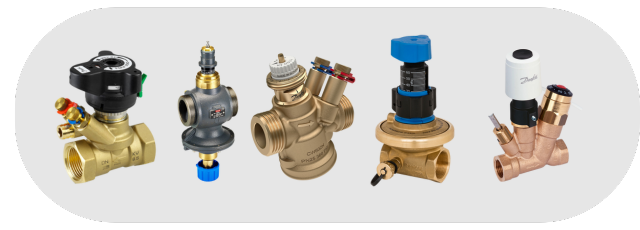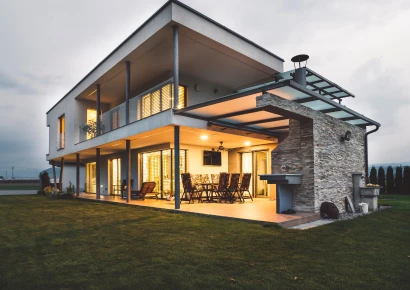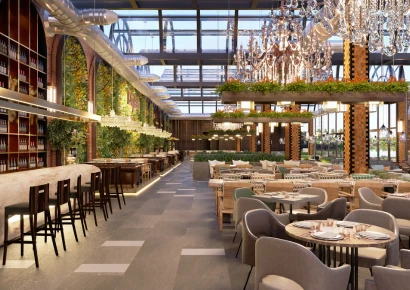Building Technologies
Autonomous Management of Different Building Technology Systems
Simultaneous Control of Multiple Disciplines
Building Automation Systems
These systems are designed to work autonomously, fulfill predetermined scenarios, save energy and provide users with a comfortable experience. Within the scope of building technologies, many different systems in a building such as lighting, ventilation, curtains, shading systems, energy analysis systems, water meters, calorimeters, electrical energy systems, and parking lot exhaust systems can be controlled in a scenario. These systems, known as building automation systems, can also be included in other disciplines such as fire and security systems in the building. Building automation systems are used in many different structures and businesses.
Main application areas: hotels, shopping malls, commercial buildings, industrial factories, hospitals, and complex buildings for gathering purposes.
Benefits of Building Automation Systems:
Controlled and Managed Systems:
Siemens-Resideo
Thermostats
It is used to create comfortable spaces and save money by controlling the humidity and temperature of the volumes.

Smart Thermostats
The desired room comfort is achieved by remotely adjusting the room temperature and humidity. It can control multiple rooms with Smart Room Sensors.
Conventional Thermostats
These products, offered with LCD Screen options, have a 7-day programmable feature. The device has cooling, heating and automatic mode features.
Manual Thermostats
There is no programming feature in this type of product. Indoor temperature, heating intensity and fan status are displayed on the LCD screen.
Programmable Thermostats
Hydronic for heat and comfort Programmable thermostats offer superior comfort by controlling both ambient air and underfloor heating temperature.
Electric Heat Thermostats
These products, which have two alternatives: programmable and non-programmable, have options such as economy mode, holiday mode and comfort mode.
Frese-Danfoss-Resideo-Honeywell-Siemens
Control Valves
Balancing and control valves produced for the most efficient use of air conditioning systems.

Manual Balancing Valves
Heating and cooling systems are designed on the principle of continuous flow and circulate large amounts of water. Ensuring correct design flows in these systems is critical to increase efficiency, and manual balancing valves are the most suitable option for this purpose.
Differential Pressure Control Valves
Two-pipe heating and cooling systems are characterized by changing conditions as valves open and close depending on heating or cooling demand. Automatic balancing valves are the best option for such systems.
Pressure Independent Control Balancing Valves
In two- or four-pipe systems, flow and different pressure changes occur as valves open and close during heating or cooling. To avoid such problems, Pressure Independent Balancing and Control Valves (PICV) provide the best and simplest solution.
Thermal Balance Valves
Even distribution and safety are important in hot water systems. To avoid the risk of Legionella, the water temperature should be high but not scorching. Therefore, manual or automatic balancing valves cannot be used. Thermostatic balancing valves, which control the water temperature in each riser line of the system, are the best option for such systems.
Dynamic Flow Limiting Valves
These valves, which have adjustable features, are valves that limit and cut off the flow in heating and cooling systems. They can be easily used in the distribution of cold and hot water. It can be adjusted manually and can be used in both variable and constant flow systems. In this way, it provides easier and more reliable flow control than traditional double-regulating valves.
Fire Safety & Building Technologies
For detailed information
Contact us
We are here to answer all your questions about systems, product certificates, regulations, application and post-installation operating procedures.
Our Phone Numbers:
+90 232 111 22 33 (TR)
+99 897 036 15 84 (EN)









